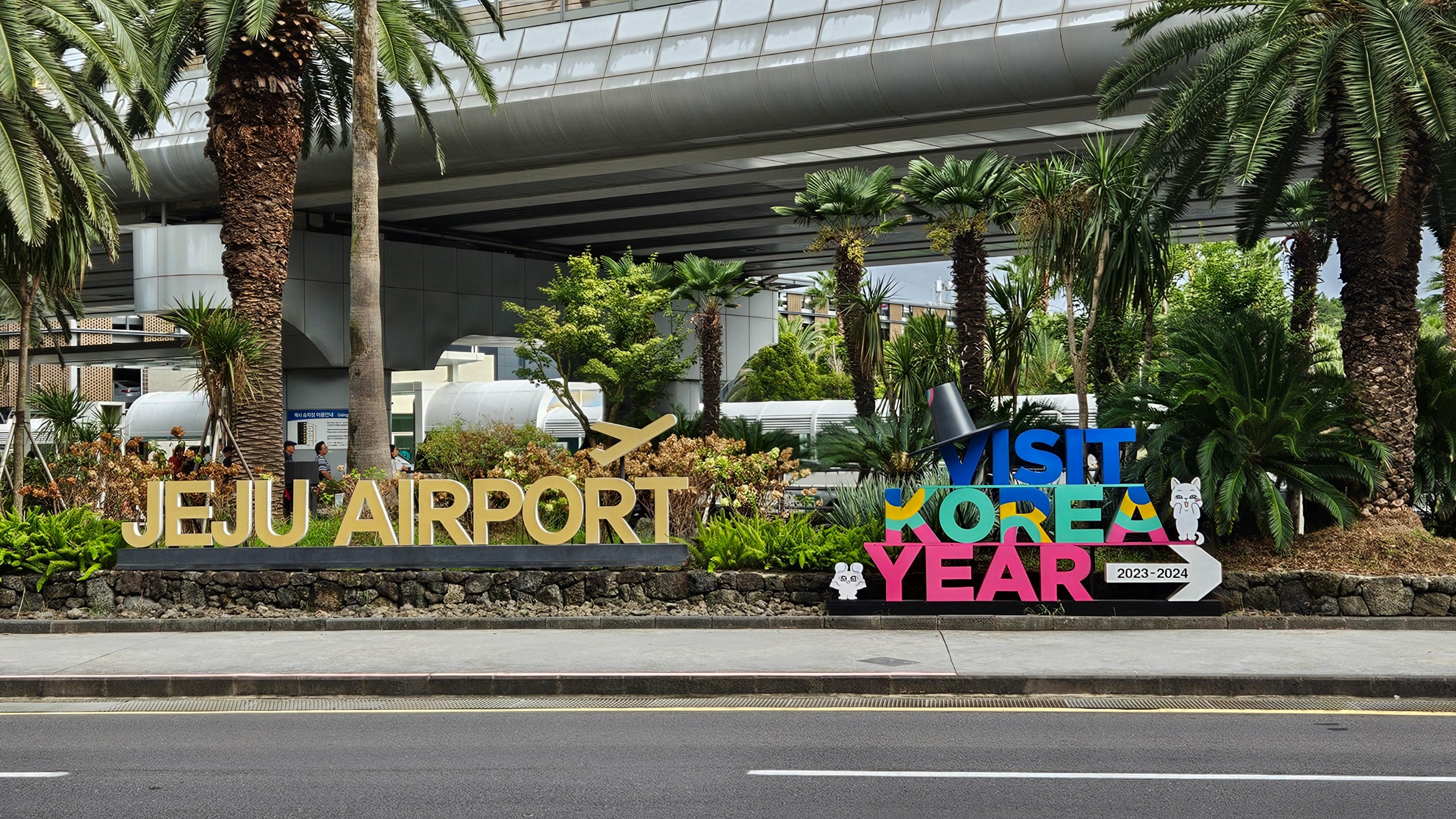
DAY 4
(Reading time: 5 minutes)
Jeju is known by Koreans as the “Hawaii of South Korea.” This volcanic island, the largest in South Korea, is dotted with volcanic craters (called oreum) of various sizes. The largest is Hallasan, the island’s prominent landmark and, at 1,947 meters, also the highest peak in South Korea. Besides volcanoes, you’ll also find black sand beaches, subtropical plants, waterfalls, and cliffs. Koreans often and happily spend their vacations here.
Years ago, we planned that on our next visit to South Korea, we would definitely not miss Jeju. So, we included it in this year’s itinerary a few days after our acclimation in Seoul. We bought our flight tickets via Booking – the current price for a one-way ticket is around 25 000 KRW per person, give or take; if you need checked baggage, add another 25 000 KRW. The selection of airlines is surprisingly varied for “just” one island, with Jeju Air, Korean Air, Asiana Airlines, Air Seoul, and T’way Air flying from Gimpo Airport. As you can see on the departure board, there are plenty of flight times. Practically, you can wake up, head to the airport, and decide which airline and time you want to fly that very day.
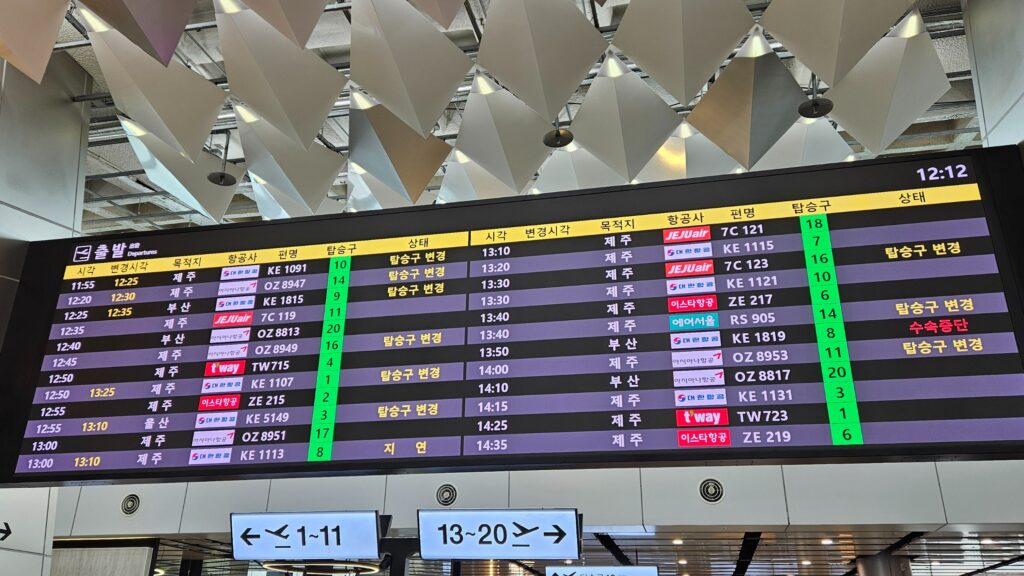
Departures to Jeju have their own check-in hall, minimizing the risk of lost luggage – all bags will eventually land in Jeju. However, the system for checking in foreign nationals was rather unusual. A young woman at the counter sent our luggage for inspection and asked us to step aside. After a few minutes, she informed us everything was fine and handed us our boarding passes. We saw the same process with other foreigners. When we asked why, the staff answered in very poor English that it was due to our lack of a Korean phone number… ??? …this may have been a mistranslation, given the language barrier.
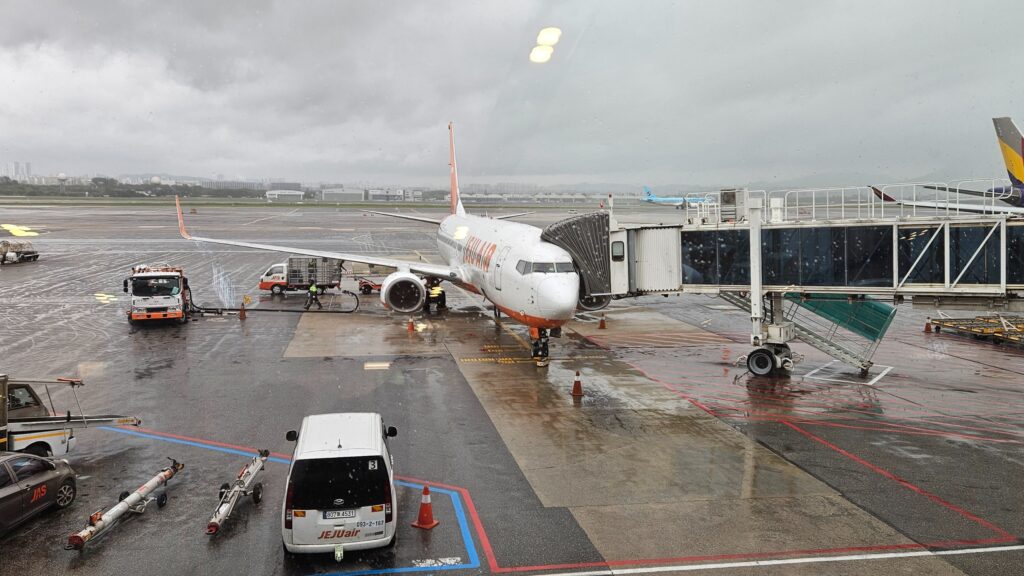
The flight lasts just over an hour, and if you want a view of the island as you approach, book a seat on the left side of the plane.
Jeju is much larger than we expected, with the capital, Jeju City, home to about half a million people. The best way to get around the island is by rented car. Taxis are less convenient and more expensive. Then, of course, there are buses – the cheapest, slowest, and most frustrating option.
We don’t love buses (especially in Asia). They’re often the least efficient form of public transportation, with issues like lack of restrooms, cramped space, unreliable or nonexistent schedules, traffic jams, overcrowding, etc. Here, though, there was no avoiding them.
“Fortunately,” in 2017, the local government restructured the bus system:
– they expanded bus routes to less-traveled locations
– and added touch-screen panels with timetables and relatively stable Wi-Fi at selected stops
Good intentions can often pave the road to hell… A foreigner unfamiliar with Korean language will be as lost now as they were before 2017.
Expanding buses to remote areas means frequent transfers, which the touch panel doesn’t mention. You have to figure out on your own where to go, where to get off, you may wait up to an hour for the next bus, hoping to be back by evening…
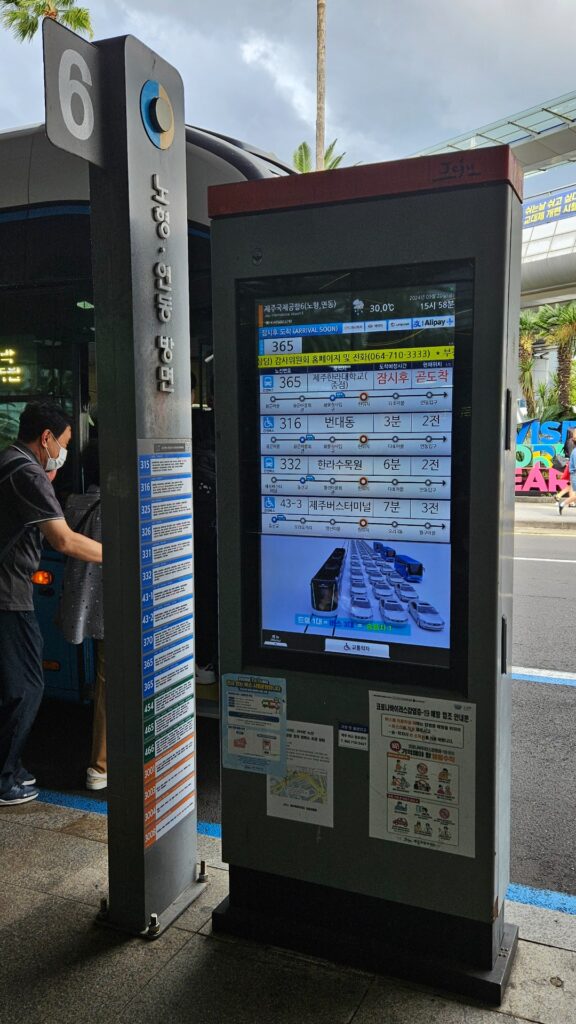
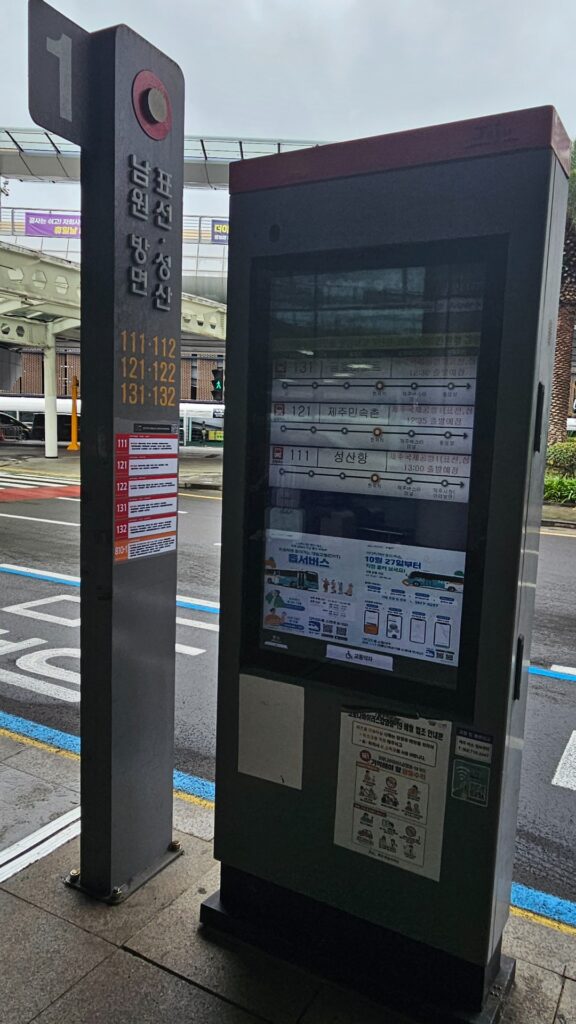
Moreover, these touch panels are found primarily in city stops, meaning they’re not available in more remote areas. The panels can switch to English or Chinese, but they’re still just machines – they malfunction in rain, sometimes don’t work at all, and are often crowded with other confused people, including locals. Even for them, the system is sometimes incomprehensible.
Some buses have different numbers for the same route in the opposite direction, making it even more confusing.
Stops without panels offer timetables only in Korean, and these often don’t make sense even if you decipher the language and find a departure time. Sometimes the bus just doesn’t show up, and you’re left wondering why.
One helpful aspect is the color-coding of bus lines – blue is local (stops everywhere), green for buses going to villages and remote areas, and red for express (minimal stops).
This express bus route map helped us orient ourselves (the color scheme is just tentative), at least giving us the names of stops:

Our biggest help, though, was a small timetable of bus departures from Jeju Airport Terminal. The info desk attendant pulled it out from under the counter. She had only one copy, so we took a photo, giving us some certainty about bus times from the airport stop. Our main task then was to get from our accommodation to the airport stop, which required figuring out different bus numbers.
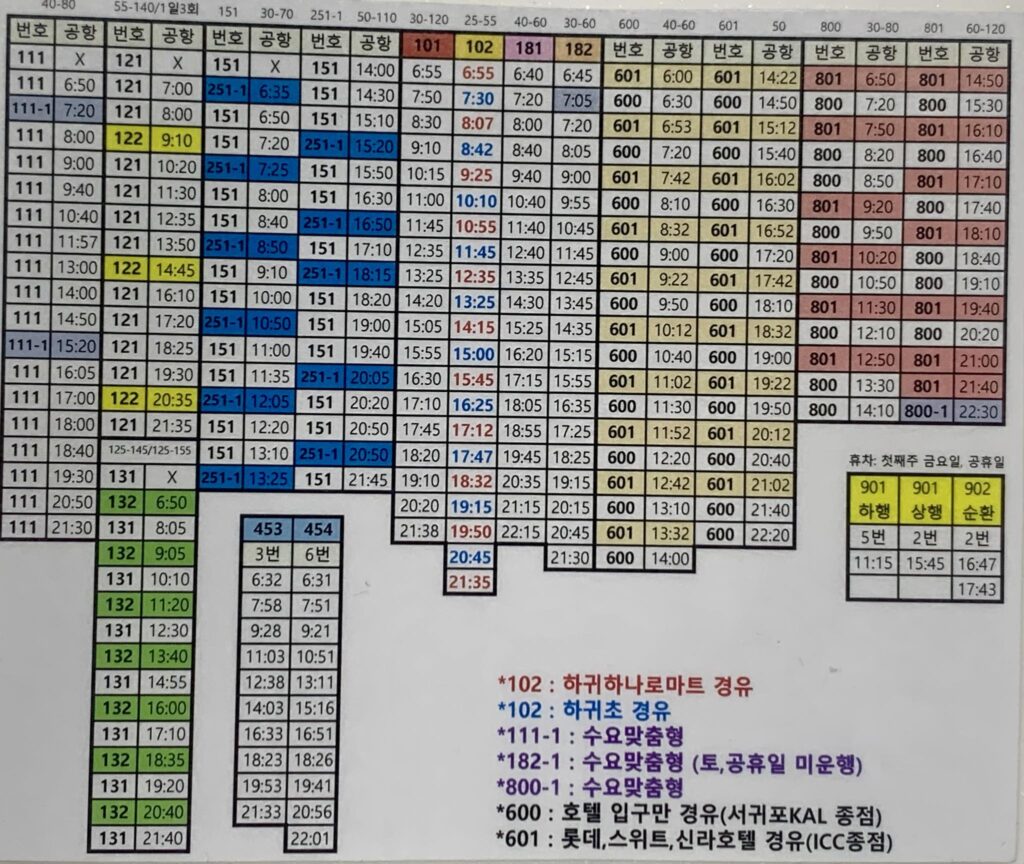
Are you feeling confused and overwhelmed with information about public transportation? Believe us, we felt the same… for several days. After six days on Jeju, we finally cracked the code of their system, but by then, it was time to move on.😄
But let’s take it step-by-step; after all, it’s just the first evening, and we should end it on a positive note – with food. 😊
In a small pedestrian alley, we discovered an inconspicuous fast food spot on the corner, selling both savory and sweet snacks to go. We got a Korean corn dog (a sausage in batter and breadcrumbs) and the best Korean doughnuts ever! At first glance, they look ordinary, but the sweet dough hides a dense filling of red bean paste, which never disappoints.

-endy-
THE DONKEY’S SPECIAL:
-mj-